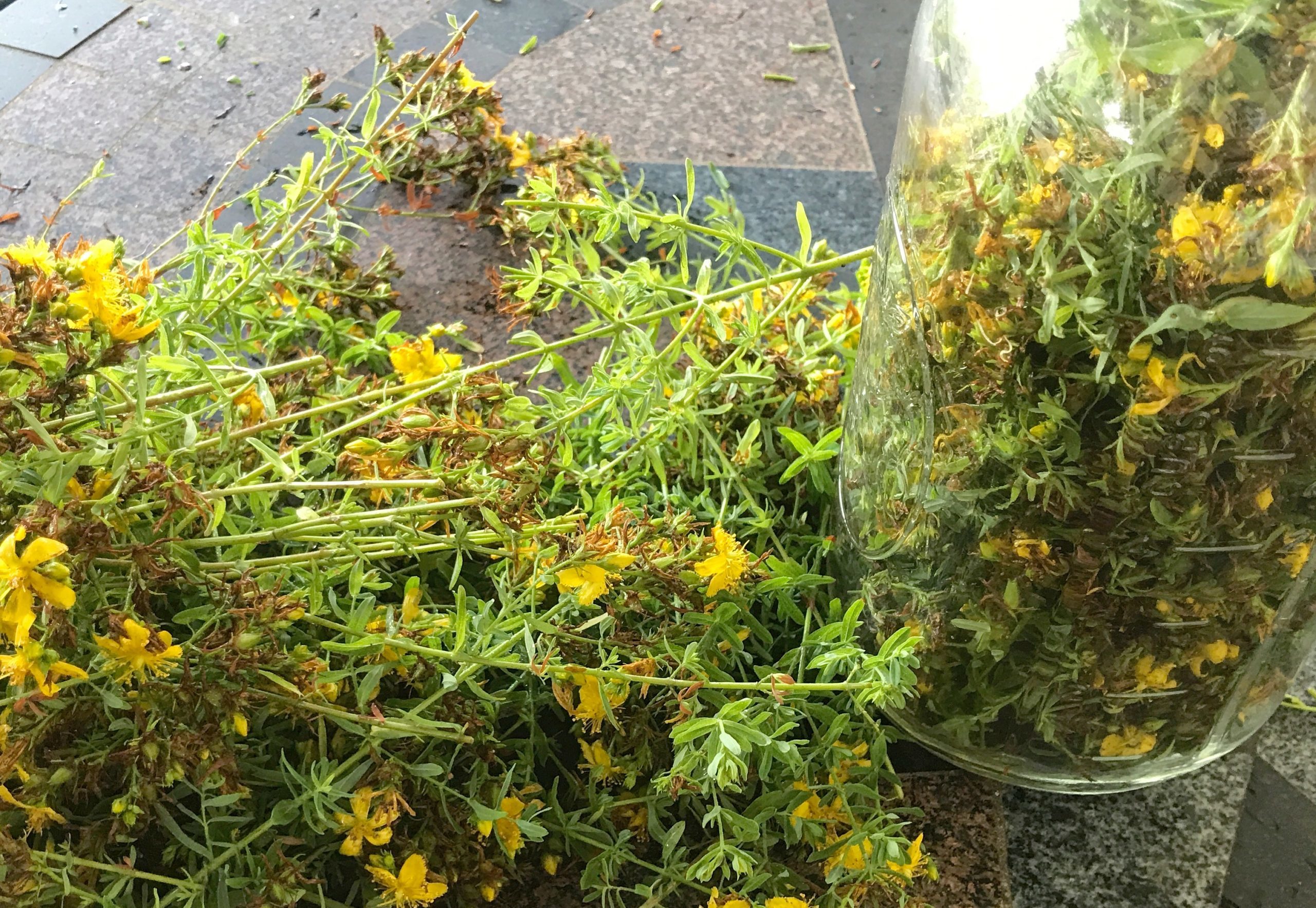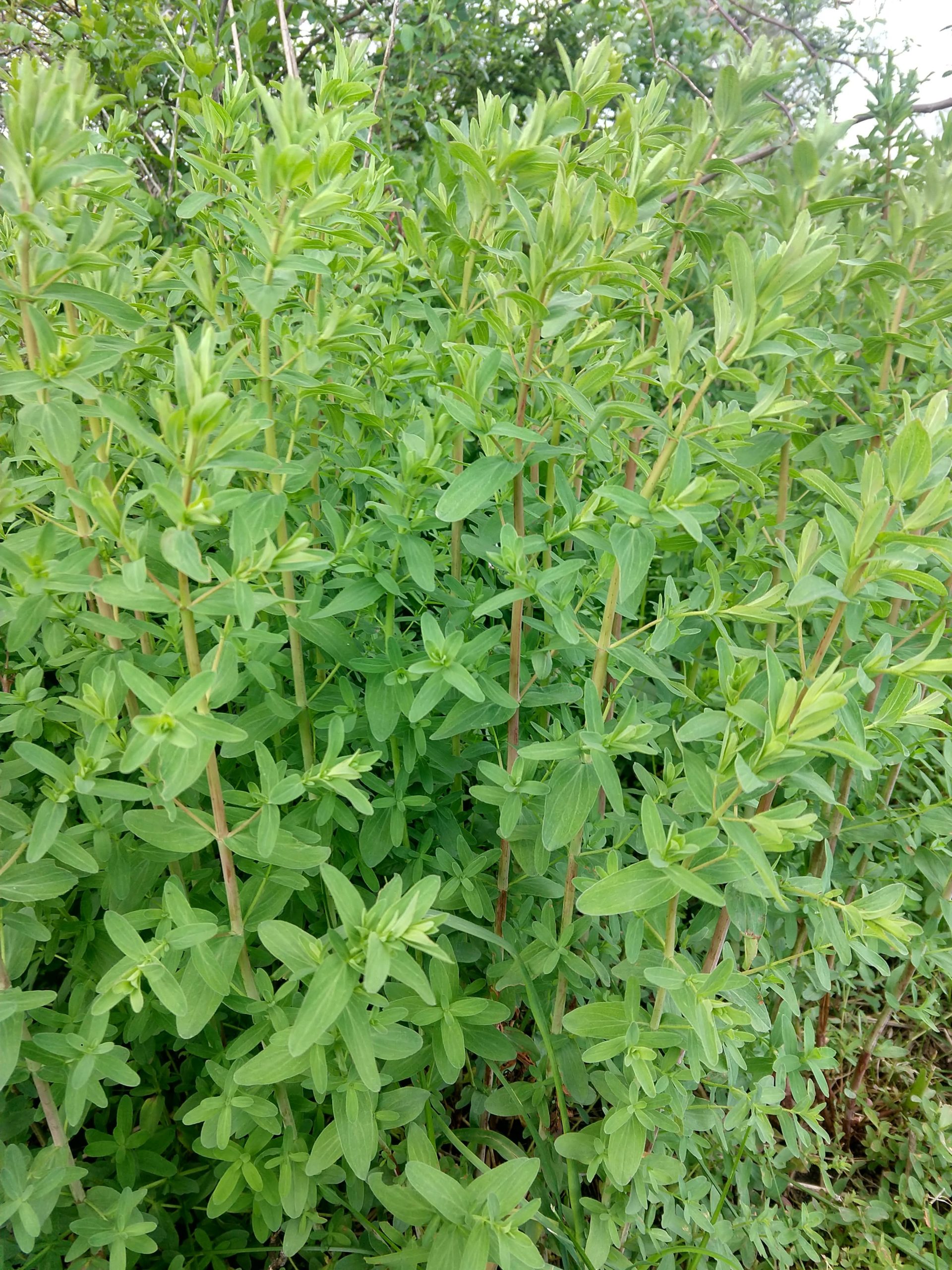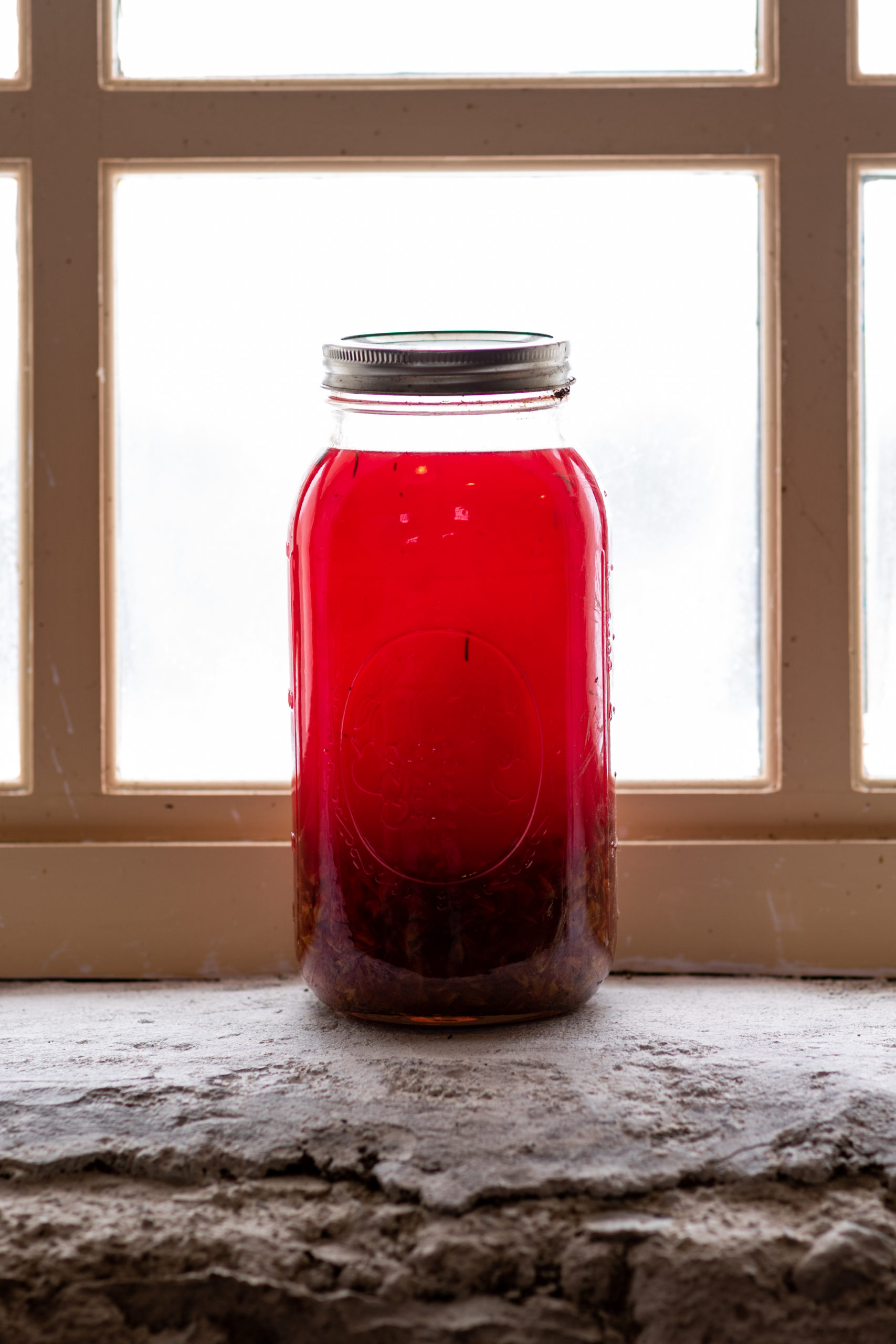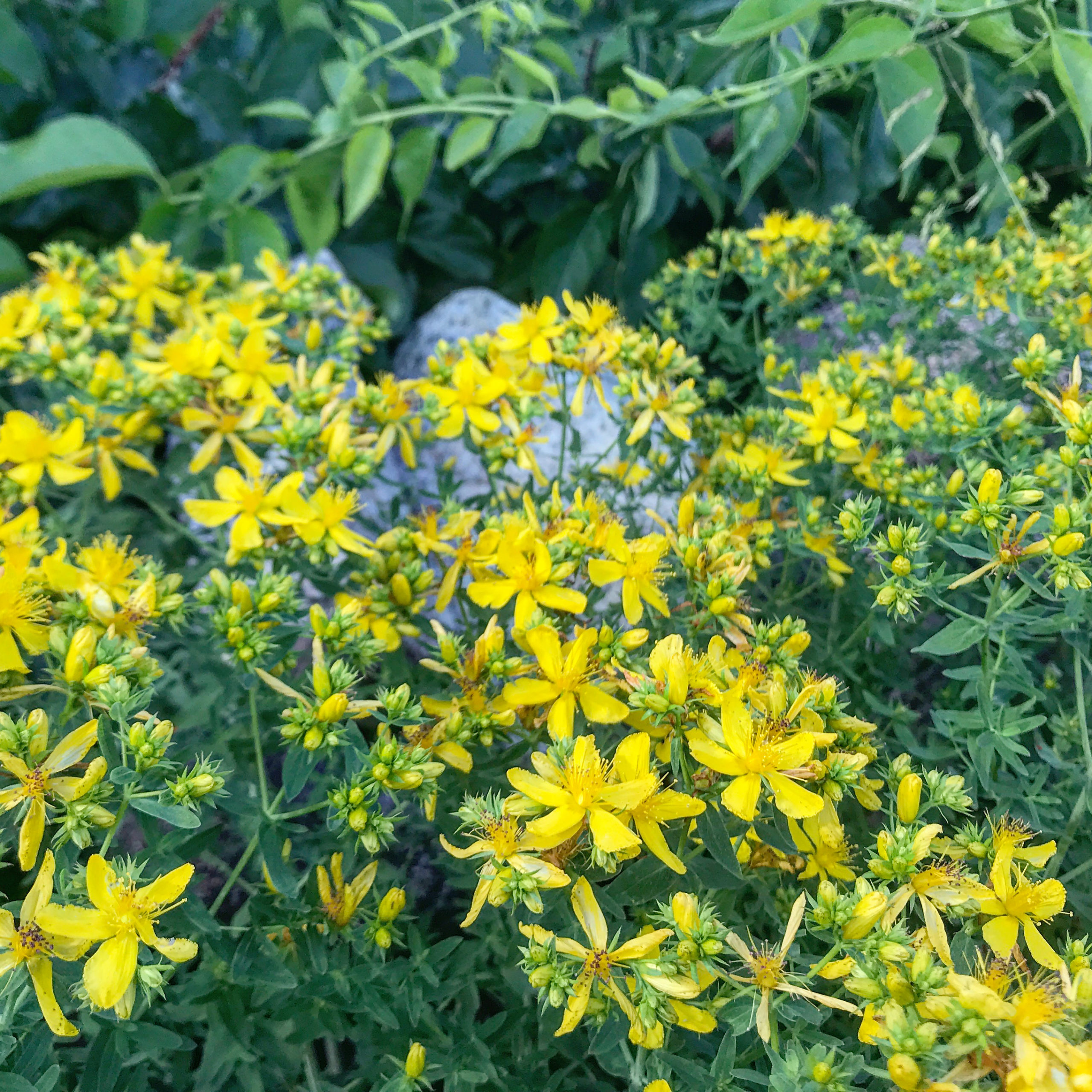JULY – ST JOHN’S WORT

Each one of us has our own symbol that tells us what we’ve been waiting all spring to hear… it’s officially summertime! For some, that symbol is the last day of school or the first backyard cookout with friends. For others, especially of the herbal persuasion, it’s the blooming of St. John’s Wort!
Without fail, the arrival of St. John’s Wort blossoms here in Southern New England mark the summer solstice as accurately as any calendar. So often does it bloom at this time that it’s nickname is “Solsticewort” (“wort” being an old Anglo Saxon word for medicinal herbs). Its common moniker comes from the fact that the feast of St. John the Baptist also falls at midsummer.
If you spend time sauntering through Westport Land Conservation Trust trails, then you have most certainly met St. John’s Wort. You’ll often find large stands on the sunny edges of open fields. And with vivid yellow flower bunches that can grow past hip height, this flower of the sun is hard to miss! When in bloom it has few look-alikes, but should you need a sure-fire means of identification, all you need is a leaf. Hold it to the sunshine and squint — you should notice tiny perforations covering the leaf through which the sun shines. Herbalists call this its “energetic signature”, St. John’s Wort’s way of telling us of its ability to “let the light in” during times of depression. It’s also the origin of St. John’s Wort’s Latin name, “Hypericum Perforatum”. Tradition has it that St. John’s Wort stores the power of the sun, lending that strength to us through its flowers.

Best known for its ability to restore nervous system function and ease depression, St. John’s Wort’s cheery flowers happen to offer a variety of applications. The best for the beginner herbalist and forager? Topical! A simple oil infusion is guaranteed to impress and mystify even the herbal skeptics. It’s seemingly magical — when infused into oil the fresh flowers transform that liquid to an otherworldly red. Yes, bright RED! That vibrant change in color indicates that your oil is ready to soothe aches, pains, neuralgias, and sunburns.
So where to get started? Grab a mason jar, your favorite oil, and head to the fields!
- Harvest St. John’s Wort flowers that have just bloomed – they will have the highest amount of pain-relieving compounds that you’re seeking. Gently pluck the blossoms and add them into your jar. (Towards the end of the season you can harvest leaves too, when there are few buds remaining.)
- Fill your jar with oil, at least enough to cover all of your flowers. Close your lid tightly — line with wax paper if it’s metal, to prevent corrosion.
- Place your jar in the sun, whether in the garden or on a windowsill, and let the solar rays do their work! Visit your jar daily, giving it a shake so that the oil infuses well.
- Within 2-4 weeks, the oil should be a brilliant, deep red. One month, or one moon cycle, is a great traditional method for tracking the steeping time.
- Pour your oil through a cheesecloth-lined strainer. Store the final product in an airtight jar and out of the sun. (No need for refrigeration.)


The resulting oil should last a year or more, and can be used on its own or a salve base. Feel free to add a few drops of your favorite essential oils for added scent and effect,hough I’ve found that the oil has a lovely fresh scent just as it is! Enjoy your St John’s Wort oil as a topical remedy to relieve pain associated with injuries (sprains, breaks, sore muscles), nerve issues (sciatica, neuralgias), and minor burns (especially sunburn). Gardeners and farmers, your tense muscles will be especially grateful to have St. John’s Wort oil to turn to!
Before you’re off to harvest, remember the ethical forager guidelines: never take the first or last plant you see, never take more than half of what you find, and always properly identify before use. Ideally, there should be no trace that you’ve been there after you depart, and more than enough left for birds, bees, bugs, and fellow foragers to enjoy.
*A note on internal use: studies have shown internal use of St. John’s Wort in high doses to potentially increase photosensitivity. It also increases the body’s ability to metabolize and excrete pharmaceuticals. That’s why the best bet for an herbal beginner is enjoying the power of St. John’s Wort as a safe and gentle topical oil!
Happy summer & happy foraging, friends!

Carissa Wills-Demello
Author
Carissa is Westport native, a practicing herbalist, a lover of wild plants, and owner of BIlo Herbs. You can enjoy Dandelion and other nutritious weeds in her herbal tea blends, syrups, and vinegars! (Check out www.BiloHerbs.com)

